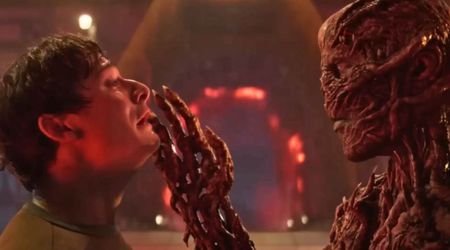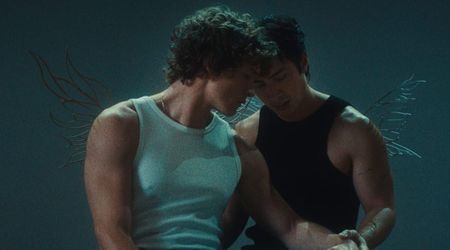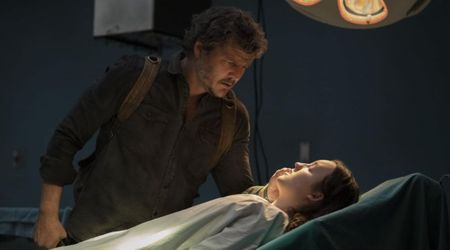'Buried Worlds with Don Wildman' Episode 5: Exploring Peru's ancient tribes unravels secrets of human sacrifices

Peru is among the most beautiful places on earth but has been hit by many calamities. It's rugged mountains, dry and rocky coastlines, and natural disasters such as floods, earthquakes and deadly storms have plagued the country for centuries. Yet amid all these tribulations, history entails that many powerful civilizations thrived in Peru, and over the years, historians have unearthed evidence that some of the most powerful South American empires were founded and flourished there.
But a mystery that still surrounds these civilizations is their way of life. In the latest episode of 'Buried Worlds with Don Wildman', the Travel Channel host travels to Peru to investigate ancient cults and their secretive religion to dig deep to uncover the truth behind human sacrifices. He looks into the gruesome and bloody rituals they held to harness the power of the gods and even finds evidence of a supernatural war in a remote cave, high up in the Andes mountains.
The Chavin tribe - Chavin
Wildman visits the Chavin de Huantar, an ancient temple located in the Ancash Region of Peru 160 miles north of its capital city, Lima. The temple, which is now in ruins, dates back circa 900 - 200 BC, during the Chavin, pre-Columbian/pre-Inca culture. The site is situated in a narrow valley in the high Andes, about 10,500 feet above sea level. Wildman refers to it as the "temple of doom".
People from all over came to the isolated location just to enter the temple, some 3,000 years ago, because they believed that a tunnel underneath the temple would bring them face to face with their gods. The temple was discovered 100 years ago, but its secrets are only being uncovered now. The rumors surrounding the ancient infrastructure say that it was a passageway to the realm of the gods, but worshippers had to go to hell and back in order to reach the other side.

The temple complex that remains today is composed of two building phases — the U-shaped Old Temple and the New Temple. The former was built around 900 BCE and the latter, built around 500 BCE, expanded the Old Temple with an added rectangular sunken court. The whole area of the land that the Chavin de Huantar stands on extends to the size of 20 football fields and includes pyramids and plazas above ground.
The interior of the tunnel is made up of a two-mile underground labyrinthine channel of tunnels where the temple's mysterious and dangerous rituals took place, and further below is a system of canals that were filled with water rushing in from nearby rivers. The temple, now a certified Unesco World Heritage site, is believed to have housed its first occupants around 5,000 years ago and became a cultural center for ancient Peruvians in about 1,000 BC.
The insides of the Chavin de Huantar are etched with sculptures and carvings that served as a ceremonial center and was possibly even home to an oracle, until 500 BCE. The primary religious functions had ceased prior to 400 BCE and the grounds were later a casual residence to the Chavin tribe. In the summer of 2018, an underground isolation chamber was unearthed, which gave historians an idea as to the ancient tribe's religious and occult practices.
They believe that the isolation chamber was used in the initiation ceremonies of those people that wanted to meet their gods. But it wasn't an easy journey. The initiation was a one-month long process and required that the initiate be confined in the chamber in completed darkness for two days or longer in sensory deprivation. They would be taken out of their world and prepared to communicate with the gods.

Complete isolation and sensory deprivation induce extreme terror and hyper reactions to even a flicker of light, sound or movement. Some initiates never made it past the first step and are likely to have gone insane. Experts have also discovered bones and human remains in the temple that prompts them to question if the second step to the initiation was a blood sacrifice.
Then their step would have involved the Lanzón. The Lanzón is an obelisk of the god for whom the temple was constructed and was hidden deep within the Old Temple, possibly only seen by priests. It is represented by a notched wedge-shaped stone towering at 15 feet and on its surface is a craved portrait of a supernatural being with animalistic features and jaguar-like teeth.
These ancient tribes dabbled in hallucinogenic drugs, which were sourced from several indigenous cactus species like the San Pedro cactus. Similar to peyote, consuming the drug would enable the person to ease into a heightened state of mind. So hallucinogens were essentials to the initiation, which allowed the human mind to enter a higher level of reality, either opening up a portal to the heavens or journey to hell.
The initiates risked their lives and sanity, even sacrificed other humans to get to the central and innermost part of the temple, the Lanzón, just so they could pass through the supernatural portal to meet their gods. Wildman descends into the temple to explore the labyrinth and tried to transport himself back in time to channel the experiences of the initiated. They were bound to have felt disoriented in the pitch-black environment blanketed in total darkness, high on hallucinogens with no clue if they would even make it out alive.

He trudges his way through the center of the temple and comes face to face with the Lanzón. In a drug-induced state, that obelisk would look like a god shining in the darkness and baring its jaguar-like teeth, says Wildman. The priests would then play the pututus (conch shell), but they didn't just have ceremonial significance. Studies have shown that certain acoustic frequencies change brain waves enabling us to attain an altered mental state, which was most likely what happened to the initiated.
So after having gone through all of this, if the initiate did make it out alive, he was likened to a god, Wildman explains. There are still lots of mysteries to uncover, but what is apparent now is that for the ancient people of Peru, death was the key to unlock supernatural powers.
The Chachapoya tribe - La Jalca
La Jalca is a city located about 600 miles north of Chavin and was founded in 1538 as San Juan de la Frontera de los Chachapoyas (Saint John of the Frontier of the Chachapoyas). It was founded some 2,000 years after the Chavin tribe and was home to the Chachapoya tribe. It is believed that the Chachapoyas got their name from the Incas. Not much is known about these Peruvian people because the civilization never kept any written records, and so their cultural beliefs and general lifestyle is shrouded in mystery.
But the one thing that they were famous for is that they buried their dead inside their homes. Archaeologists have found human bones under the floors of the Chachapoyan homes and even in the walls of the city. They kept the remains of their loved ones close to them because they believed it wasn't just the gods that gave them spiritual powers, but also the bones of the dead, Wildman concurs.

However, a recent discovery sparked a new mystery. In 2006, a farmer discovered skeletons hidden deep within a jungle cave located several miles up in the mountains. Wildman met with a local historian who led him to a similar cave, where locals who were grazing their cattle in the mountains discovered bones in 2018. The path to the cave is a steep, three-hour hike and riddled with booby traps. This is the first time a film crew has entered the cave.
Wildman descends into the cave, to explore the sacred spot for the dead. The Chachapoya tribe buried their dead inside their homes for centuries, but suddenly they began to bury their dead in the cave. Wildman intends to find out why they changed their burial spot. He finds bones, skulls, craniums and ribs buried under rock and scattered everywhere, which implies that lots of people have been interred in the cave. However, it appears that the bodies had been thrown into the caves in a haste.

The historian explains to Wildman that the reason for doing so could have been the war with the Incas. The Inca was one of the most epic South American empires to have ever flourished, and while they conquered the living, they also captured the dead. The Incas believed that the bones of their dead enemies held spiritual powers that they could use to win wars and conquer more lands. So they would steal the remains of their rulers and enemies. Hence, the Chachapoyas went to great lengths to hide the remains of their ancestors in caves to protect them.
The Chimú Tribe - Chan Chan

The Chimu Tribe made the rocky coastline of Preu their home, some 500 years ago. It was the largest city in South America, rivaling the size of present-day downtown Los Angeles and features massive pyramids and plazas, bigger than the pyramids of Egypt. And while their beliefs in the supernatural didn't entail conquering the enemy, they needed god-like powers to conquer the forces of nature.
In 2011, a couple of kids who were playing with their dogs sniffed out a site that was potentially where large, gruesome, mass human sacrifices were held. Over 200 victims and 206 llamas have been uncovered by far, possibly killed in the same sacrifice and at the same time. Multiple gravesites, contained mummified remains from where human sacrifice were excavated, and archaeologists are still trying to find answers as to why.

Experts have found evidence that the Chimú empire was a very advanced civilization. They were highly successful and had found water in an arid land, grew crops, and even fished the seas, building a city that accommodated nearly 60,000 people, Wildman observes. But the Incas conquered them in the mid-1400s. When the mass gravesite was discovered in 2011, archaeologists found human skeletal remains, stills sporting remnants of clothing. But the peculiar detail was that every skeleton had a ruptured rib-cage and clear cuts to the sternum.
Wildman also visits another ceremonial site that still has the sacrificial altar. He realizes that it was the site of a mass child-sacrifice, and archeologists have unearthed 235 skeletal remains of children plus over 300 llama bones. The Chimú believed that the gods fed on the heart and blood of the human sacrifices, and they were desperate for help from the gods. These sacrifices were intended to appeal to the gods of the sea to save them from the onslaught of heavy storms and rains that destroyed their capital city.
'Buried Worlds with Don Wildman' premieres on Mondays at 9 pm ET/PT on Travel Channel.










